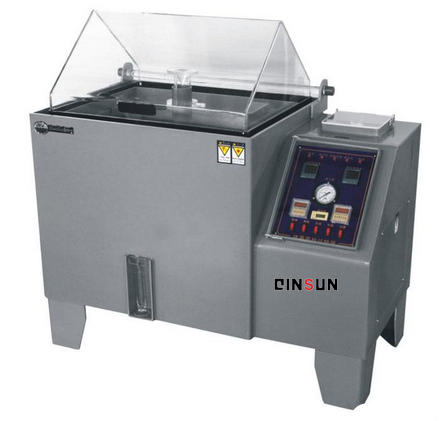
NewsInformation Center
What is salt spray testing for corrosion resistance?
2023/08/18
Corrosion Salt Spray Test (CSST) is a common laboratory test method used to evaluate the corrosion resistance of materials or coatings in harsh environments. The test method simulates salt spray conditions in a marine environment or other corrosive environment to determine the corrosion resistance of the material and the corrosion resistance of the coating.


Corrosion resistance salt spray testing is commonly used to evaluate metals, alloys and coating materials to determine their durability in corrosive environments. The test method works by placing a specimen in a brine solution with a specific concentration, then atomizing the solution into a salt spray at a constant temperature and spraying the salt spray on the surface of the specimen.
The following is the basic process and key points of corrosion resistance salt spray test:
1. Specimen Preparation: The specimen is prepared to the appropriate shape and size. This can be a sheet of metal, a steel tube, a component, or a plate with a specific coating.
2. Brine Solution Preparation: A specific brine solution is used, usually a solution of sodium chloride (NaCl) in pure water. The concentration of this solution is usually 5% by weight, but the exact concentration may vary depending on the test requirements.
3. Test chamber conditions: Ensure that the temperature and humidity in the test chamber are at a constant. A common condition is a constant temperature of 37°C and a humidity level of 95% or more.
4. Specimen Placement: Place the specimen in the specimen holder of the test equipment, ensuring that the surface of the specimen is exposed to the salt spray area.
5. Salt spraying: after starting the test, the brine solution will be atomized into salt spray through the nozzle of the equipment and sprayed on the surface of the specimen. The atomization time and spraying cycle can be adjusted according to the test requirements.
6. Observation and Evaluation: During the test cycle, the corrosion of the specimen can be observed periodically, including the degree of corrosion, oxidation and color change. The test cycle can be set according to the need, the common cycle is 24 hours, 48 hours, 96 hours or even longer.
7. Evaluation results: According to the degree of corrosion and changes in the specimen, the corrosion resistance of the material or coating can be evaluated and categorized. Common assessment methods include corrosion ratings, corrosion degree comparisons and immersion tests.
Through corrosion resistance salt spray testing, the corrosion resistance of a material or coating can be assessed to understand its performance in harsh environments. This is important for developing appropriate protective measures, selecting suitable materials and coatings, and evaluating the reliability and longevity of a product. However, it is important to note that corrosion resistance salt spray tests only simulate a specific corrosive environment and are not fully representative of corrosion resistance under actual conditions of use. Therefore, the results should be combined with actual conditions to make a comprehensive assessment.
Previous: What is the difference between ISO 1133 and ASTM D1238?
N e x t : How does a fatigue tester work?



